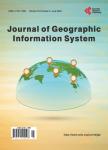Developments in Land Use and Land Cover Classification Techniques in Remote Sensing: A Review
Developments in Land Use and Land Cover Classification Techniques in Remote Sensing: A Review作者机构:Department of Geography Institute of Geosciences State University of Campinas Campinas Brazil Department of Research Instituto Politécnico de Ciências da Terra e Ambiente Matola Mozambique Embrapa Agricultura Digital Brazilian Agricultural Research Corporation Campinas Brazil
出 版 物:《Journal of Geographic Information System》 (地理信息系统(英文))
年 卷 期:2022年第14卷第1期
页 面:1-28页
学科分类:07[理学] 070601[理学-气象学] 0706[理学-大气科学]
主 题:Big Spatial Data Cloud Computing Machine Learning Remote Sensing
摘 要:Studies on land use and land cover changes (LULCC) have been a great concern due to their contribution to the policies formulation and strategic plans in different areas and at different scales. The LULCC when intense and on a global scale can be catastrophic if not detected and monitored affecting the key aspects of the ecosystem’s functions. For decades, technological developments and tools of geographic information systems (GIS), remote sensing (RS) and machine learning (ML) since data acquisition, processing and results in diffusion have been investigated to access landscape conditions and hence, different land use and land cover classification systems have been performed at different levels. Providing coherent guidelines, based on literature review, to examine, evaluate and spread such conditions could be a rich contribution. Therefore, hundreds of relevant studies available in different databases (Science Direct, Scopus, Google Scholar) demonstrating advances achieved in local, regional and global land cover classification products at different spatial, spectral and temporal resolutions over the past decades were selected and investigated. This article aims to show the main tools, data, approaches applied for analysis, assessment, mapping and monitoring of LULCC and to investigate some associated challenges and limitations that may influence the performance of future works, through a progressive perspective. Based on this study, despite the advances archived in recent decades, issues related to multi-source, multi-temporal and multi-level analysis, robustness and quality, scalability need to be further studied as they constitute some of the main challenges for remote sensing.



